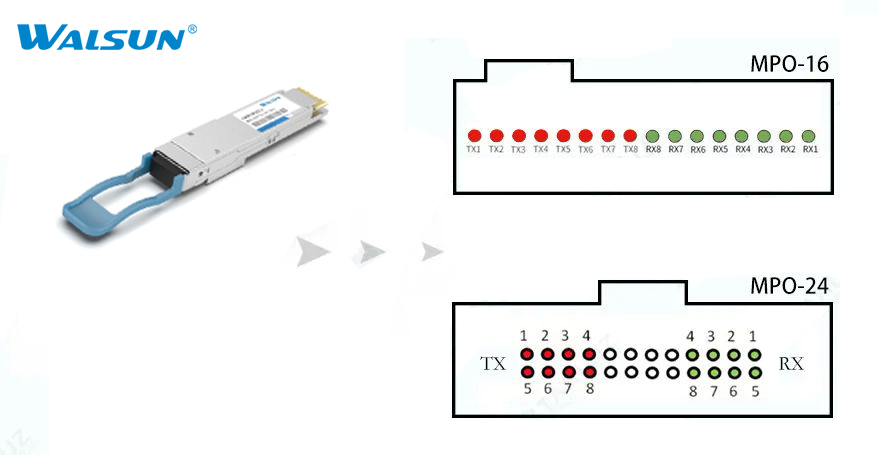

 Knowledge Base +
Knowledge Base +  2024.01.26
2024.01.26As data center network traffic continues to grow, there is a need to provide higher bandwidth and higher density optical interconnect solutions. 400G optical modules, as the core product for data centers, feature high bandwidth, low latency, and high reliability, and are the key to realizing high-speed interconnections between equipment within the data center. Among many 400G optical modules, 400G SR8 and 400G SR4.2 are different in terms of connection scheme, application scenario and performance. This article will briefly introduce the differences between these two optical modules.
Connectivity Solution: Diversified Options to Meet Different Needs
400G SR8 optical module adopts parallel channel 850nm VCSEL lasers with PAM4 modulation, which is mainly used for short-distance interconnection between equipments in data centers. The module provides a variety of connectivity options to meet the needs of different application scenarios, such as 400G QSFP-DD SR8 interconnect, 400G QSFP-DD SR8 interconnect with 2x 200G QSFP56 SR4, 400G QSFP-DD SR8 interconnect with 8x 50G SFP56 SR, etc. The 400G SR8 is designed to meet the needs of different application scenarios.

400G SR8 vs 400G SR4.2
400G SR4.2 is a four-channel multimode optical interconnect solution. For more about 400G SR4.2, please refer to: "400G SR4.2 and 100G SRBD Optical Modules: Enabling 100G-400G Data Center Upgrade".
_1706252196.jpg)
a) Cost Comparison: There are some differences in fiber optic transmission between 400G SR4.2 and 400G SR8 modules. 400G SR4.2 modules require only 4 pairs of fibers for transmission, whereas 400G SR8 modules require 8 pairs of fibers. Therefore, using 400G SR4.2 optical modules can save half of the fiber resources. Currently, due to the small number of 400G SR4.2 optical modules in the market, the price of optical modules is high compared to SR8.
b) Utilization of the existing integrated cabling network: 400G SR8 uses
MPO-16 or MPO-24 interfaces, 400G SR4.2 uses MPO-12 interfaces, as do 100G SR4
and 40G SR4. SR4.2 can directly use the existing fiber optic resources, which is
convenient for network upgrades.
_1706252530.jpg)
Subscribe to the newsletter
for all the latest updates.
2-5# Building, Tongfuyu Industrial Zone, Aiqun Road, Shiyan Street, Baoan District, Shenzhen. China
